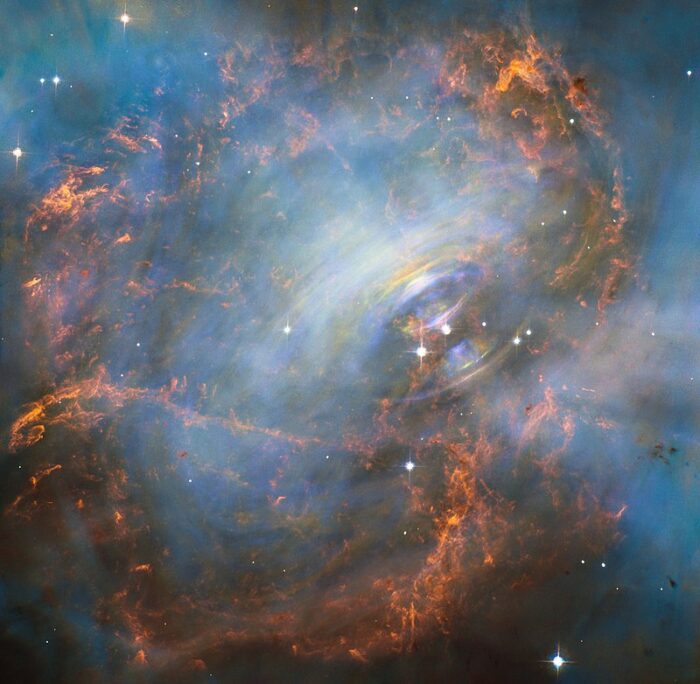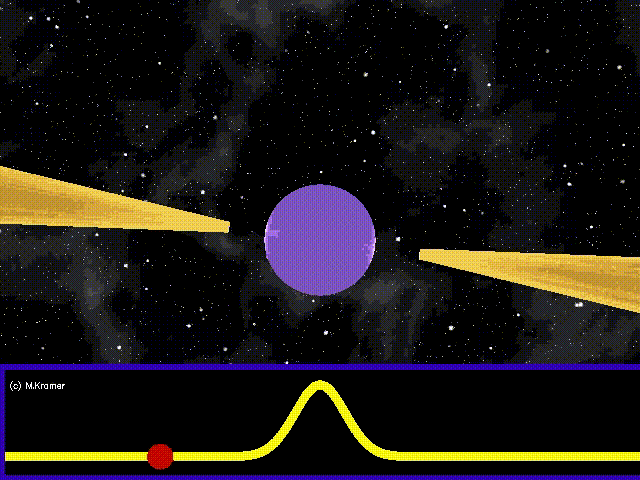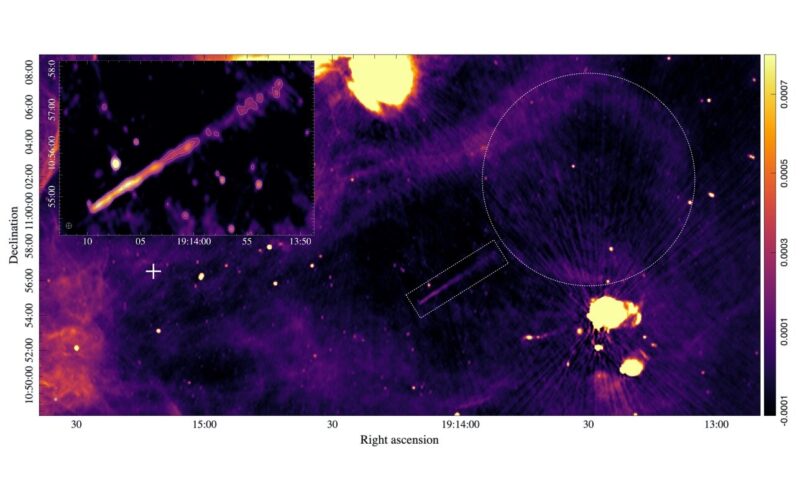Supernovas may be enormous explosions, but these events are the foundation of so much in the universe.
A supernova occurs at the end of a large star's life (our own Sun is estimated to be far too small to go supernova, instead it will expand then fade and shrink). When one happens, the mindboggling force it releases propels huge quantities of matter out into space. This includes all sort of so-called 'heavy' elements—like gold, mercury, and uranium—that can only be created in such an environment.
Meanwhile, where the star was once found is generally one of two things. A black hole, or a small, dense core of the star known as a neutron star. (A neutron star is not quite 'heavy' enough to be a black hole, but it is still unbelievably dense—a chewing gum package's worth of neutron star matter would weigh about 3 billion tonnes!)
Normally, the neutron star hangs out inside interstellar-sized clouds of gaseous leftovers from the supernova called a nebula. It looks like this:

A neutron star is at the heart of this nebula, called the Crab Nebula. (ESA/Hubble/Wikimedia Commons)
So imagine the surprise of astronomers from the Brera Astronomical Observatory in Italy and the University of Oxford in the UK when they found a neutron star not inside of the nebula, but instead zipping around space! And to top it all off, it was dragging behind it a skinny trail of radio emissions like a tail! That's a radio telescopic image of it at the top of the post.
Let's meet the neutron star known as PSR J1914+1054g and learn about its amazing journey!
On the pulse

Whee! Check out this cool animation of a spinning pulsar! (Michael Kramer/Wikimedia Commons)
PSR J1914+1054g (let's just call it 'Passer' for short!) is a particular type of neutron star called a pulsar. It is highly magnetized and rotates, and we can only see it when its beams at pointing right at us. Like the spinning lamp of a lighthouse. Because of this, its light appears to 'pulse' on and off, or from bright to dim. Hence the name 'pulsar'!
But while that explains what a pulsar does, it doesn't explains why Passer is busy flying across the universe.
Off balance
Scientists behind the research believe that what occurred was that the supernova was lopsided. Instead of the energy being released in all directions at once, it was off balance. This caused Passer the pulsar to be ejected violently away from the supernova point of origin (where it started). And it left at incredible speed, too.
It is estimated to be traveling at 320 to 360 kilometers per second (200 to 225 miles per second), meaning it travels as a far in a second as a high speed train does in an hour! As it does this, it is dragging behind it a tail of electromagnetic radiation that is about 40 light years long (around 380 trillion kilometres).
Passer is the fastest known runaway stellar object, and proof that the universe is always full of surprises!
 An image taken by the MeerKAT radio telescope in South Africa. The inset square on the top left is an enlargement of a neutron star that is zipping through space like a comet! (Motta et al., arXiv, 2023)
An image taken by the MeerKAT radio telescope in South Africa. The inset square on the top left is an enlargement of a neutron star that is zipping through space like a comet! (Motta et al., arXiv, 2023)









